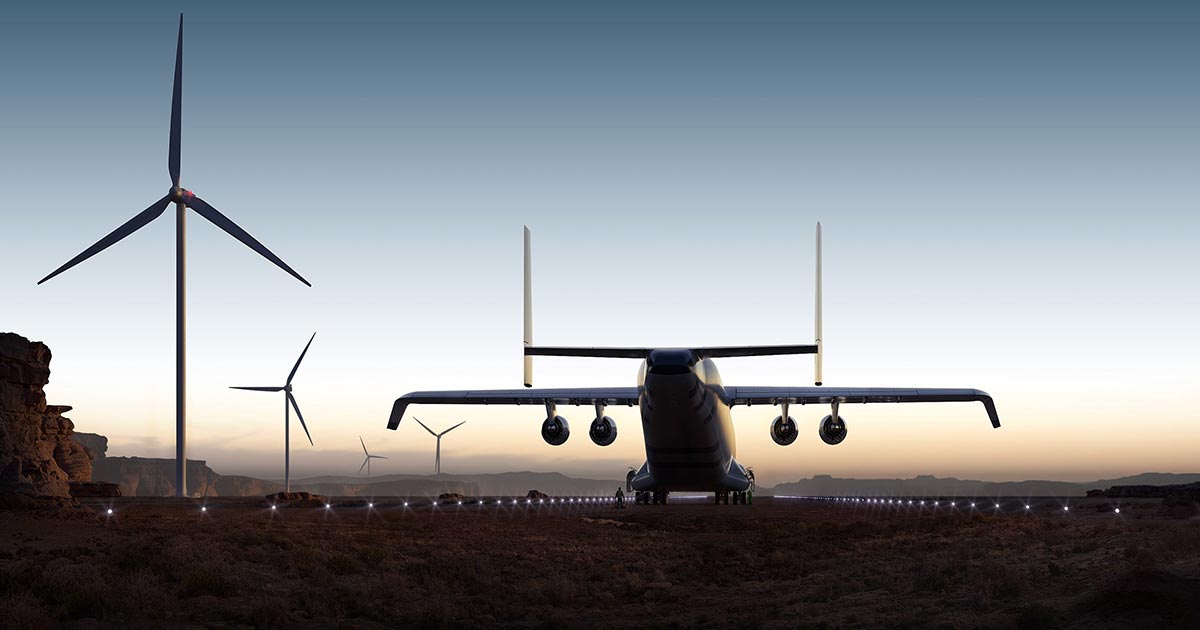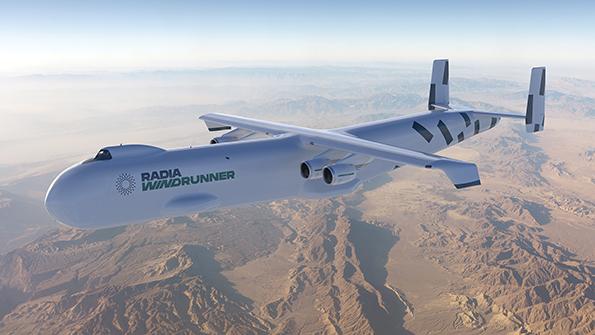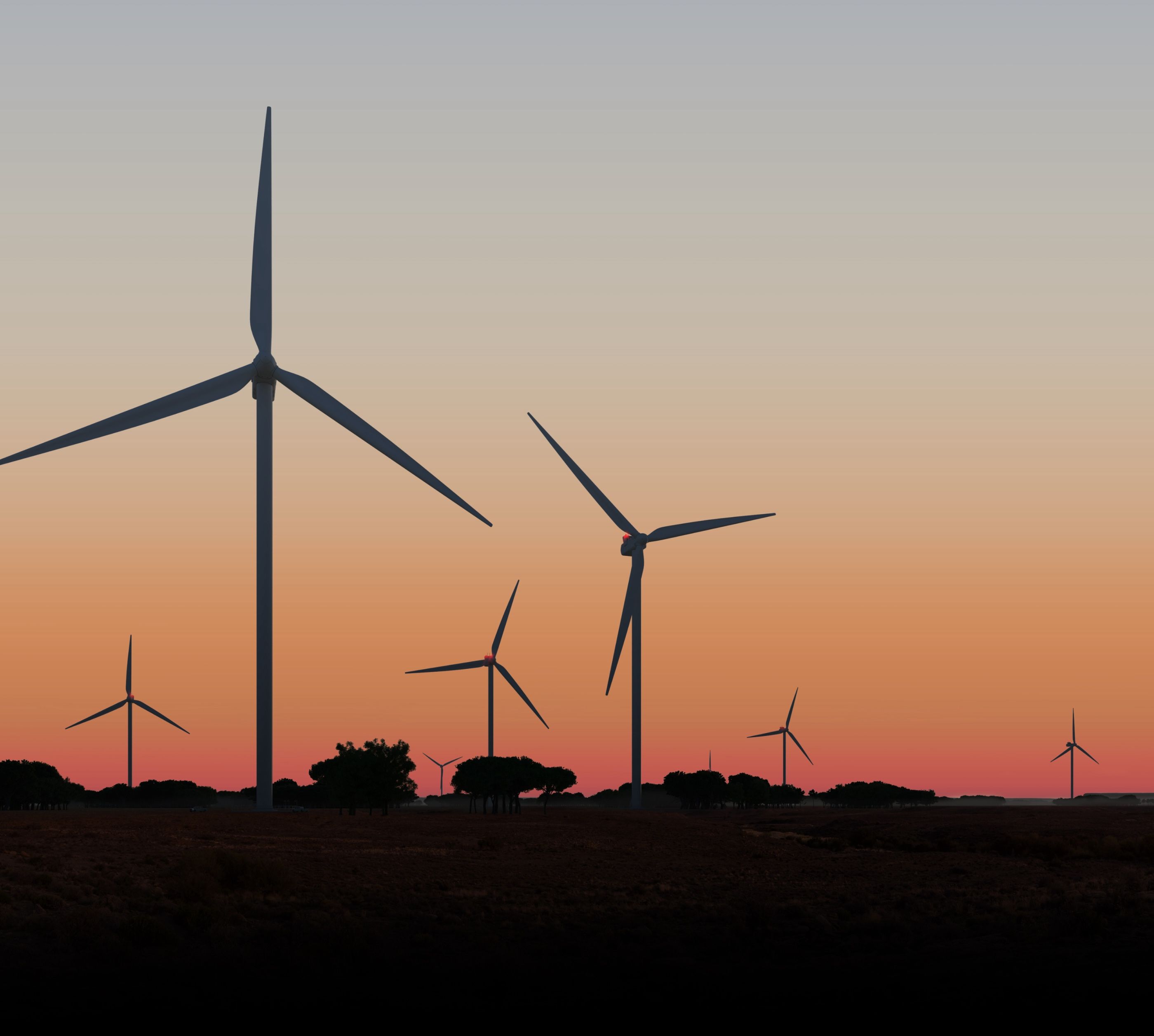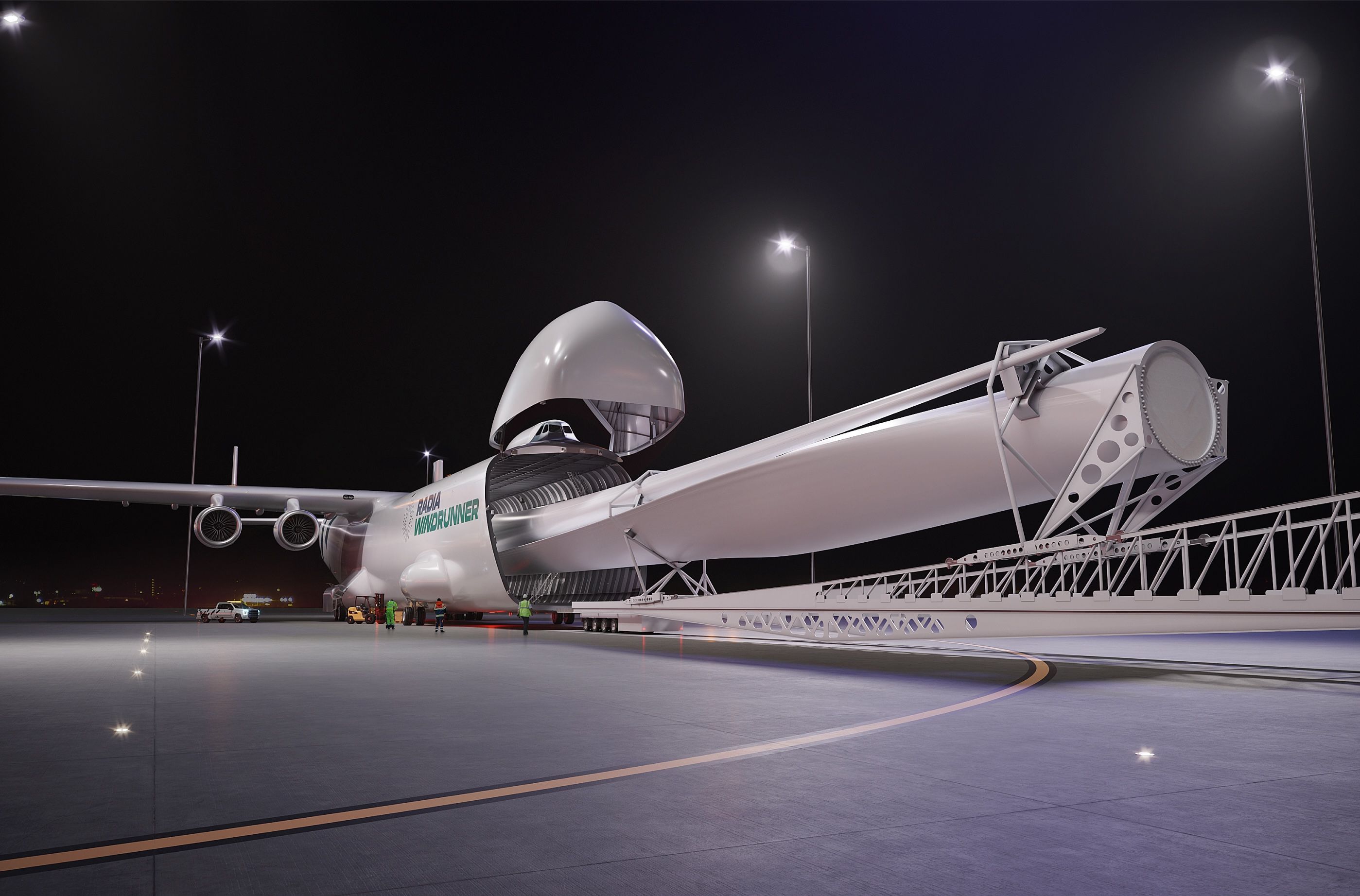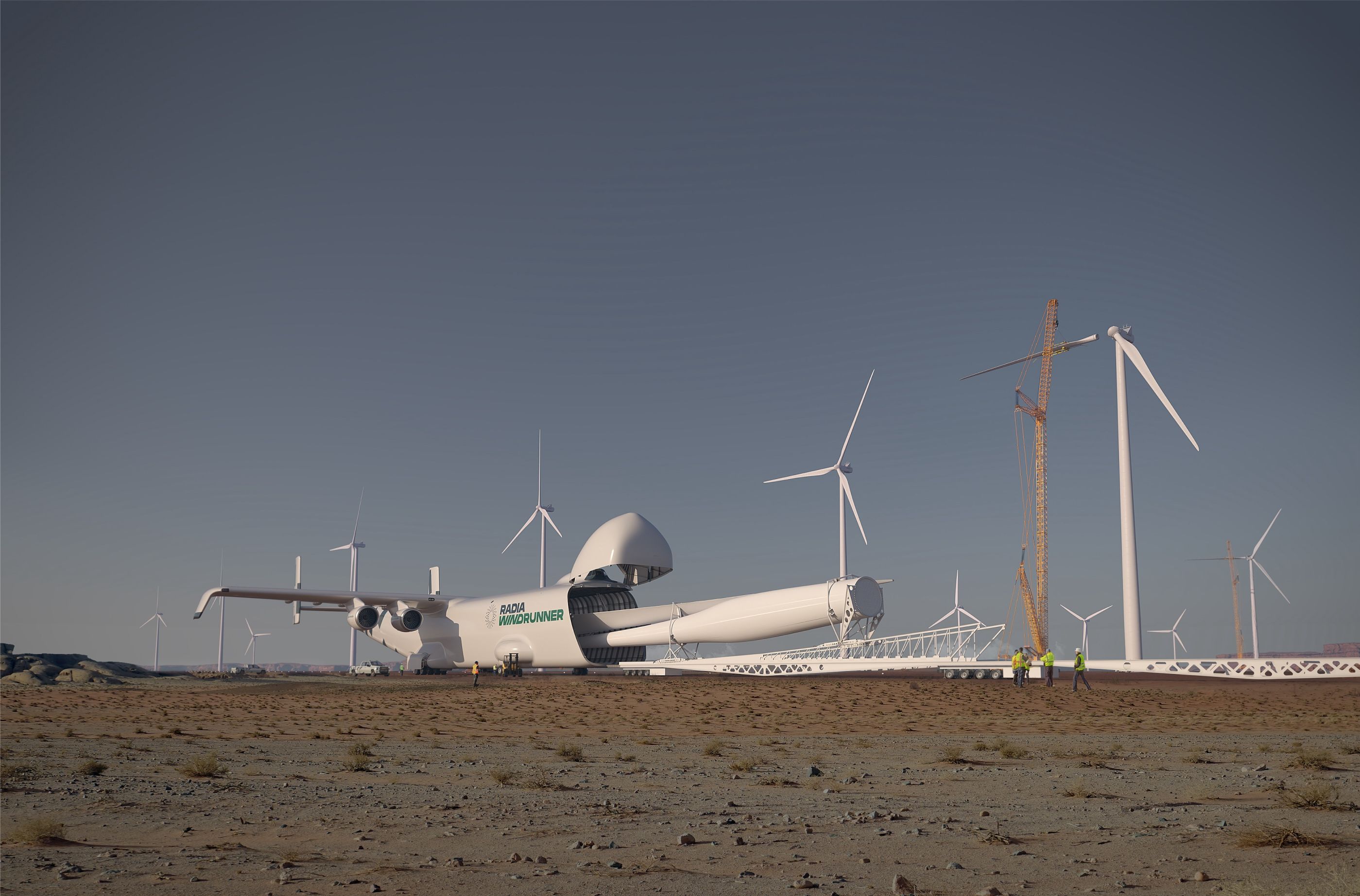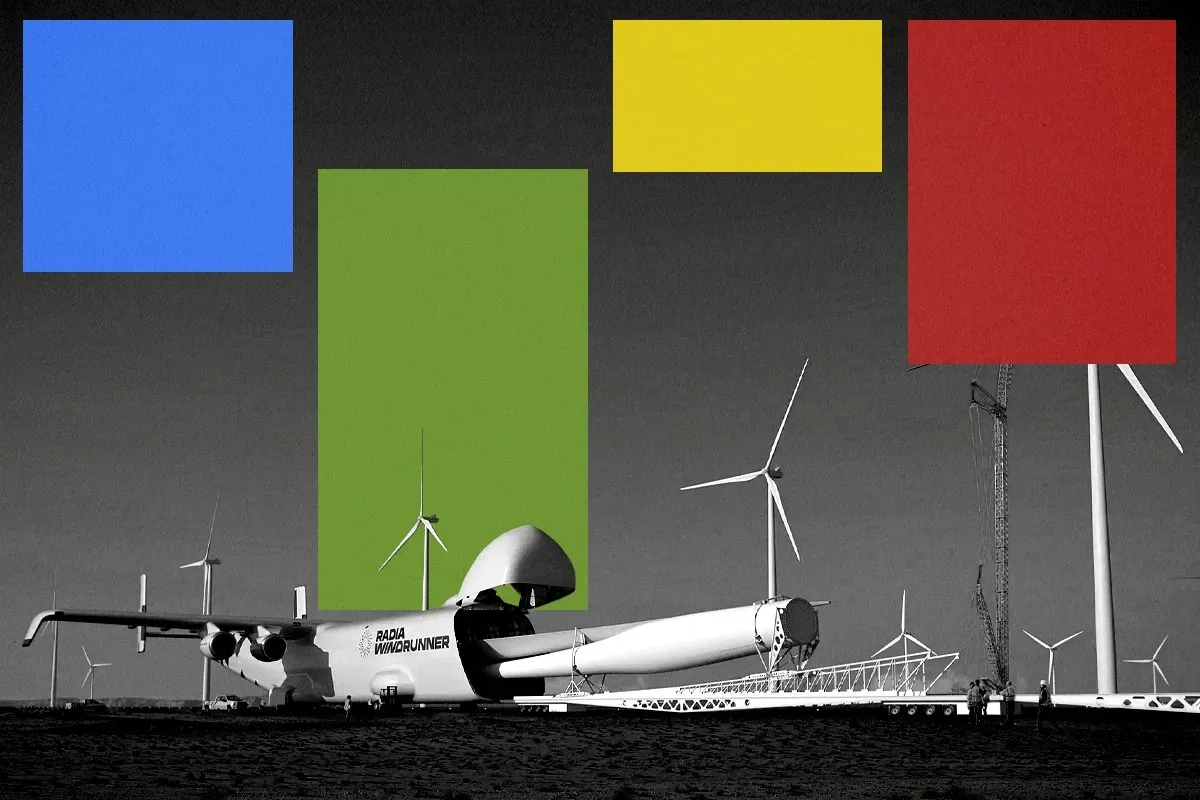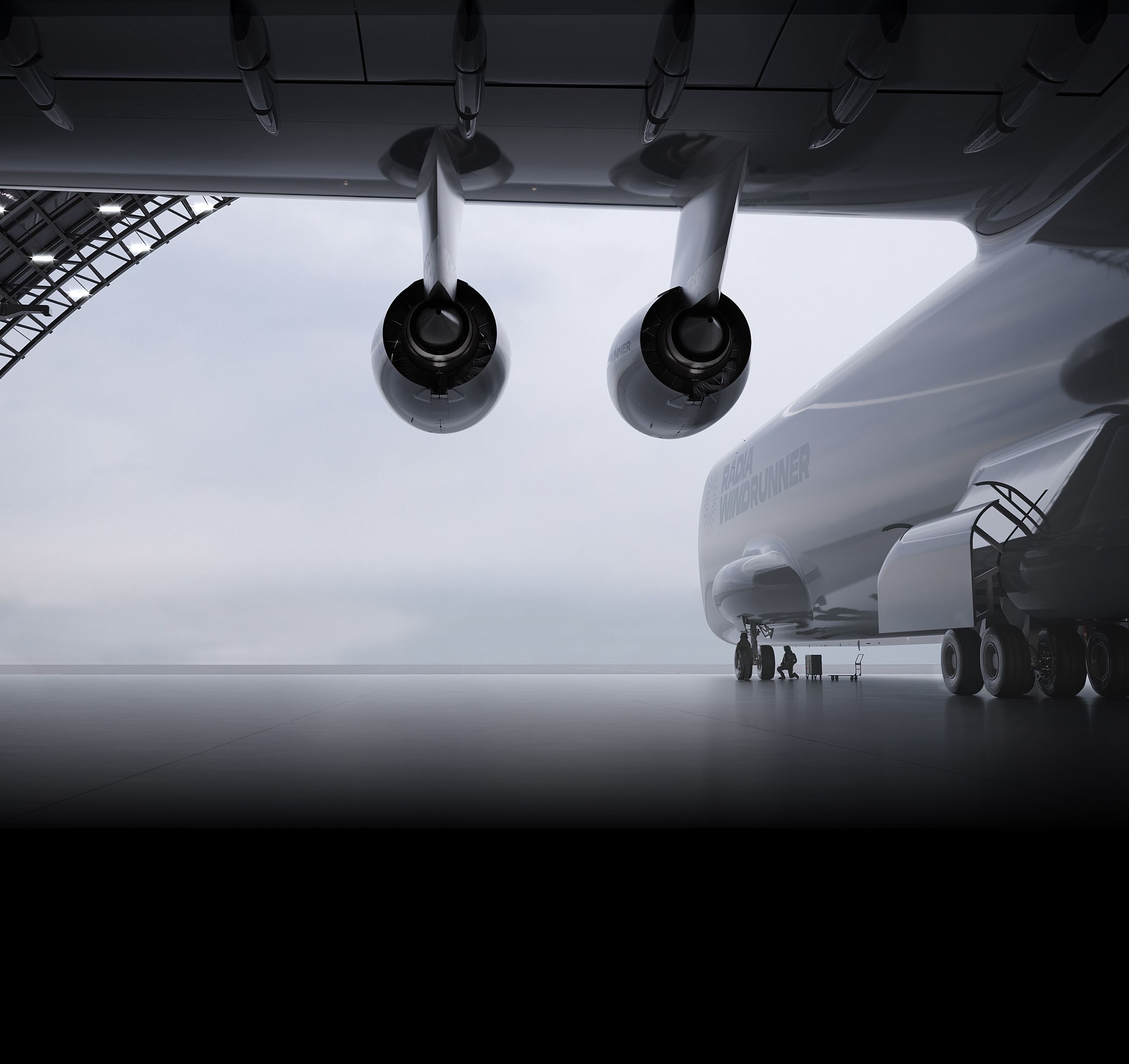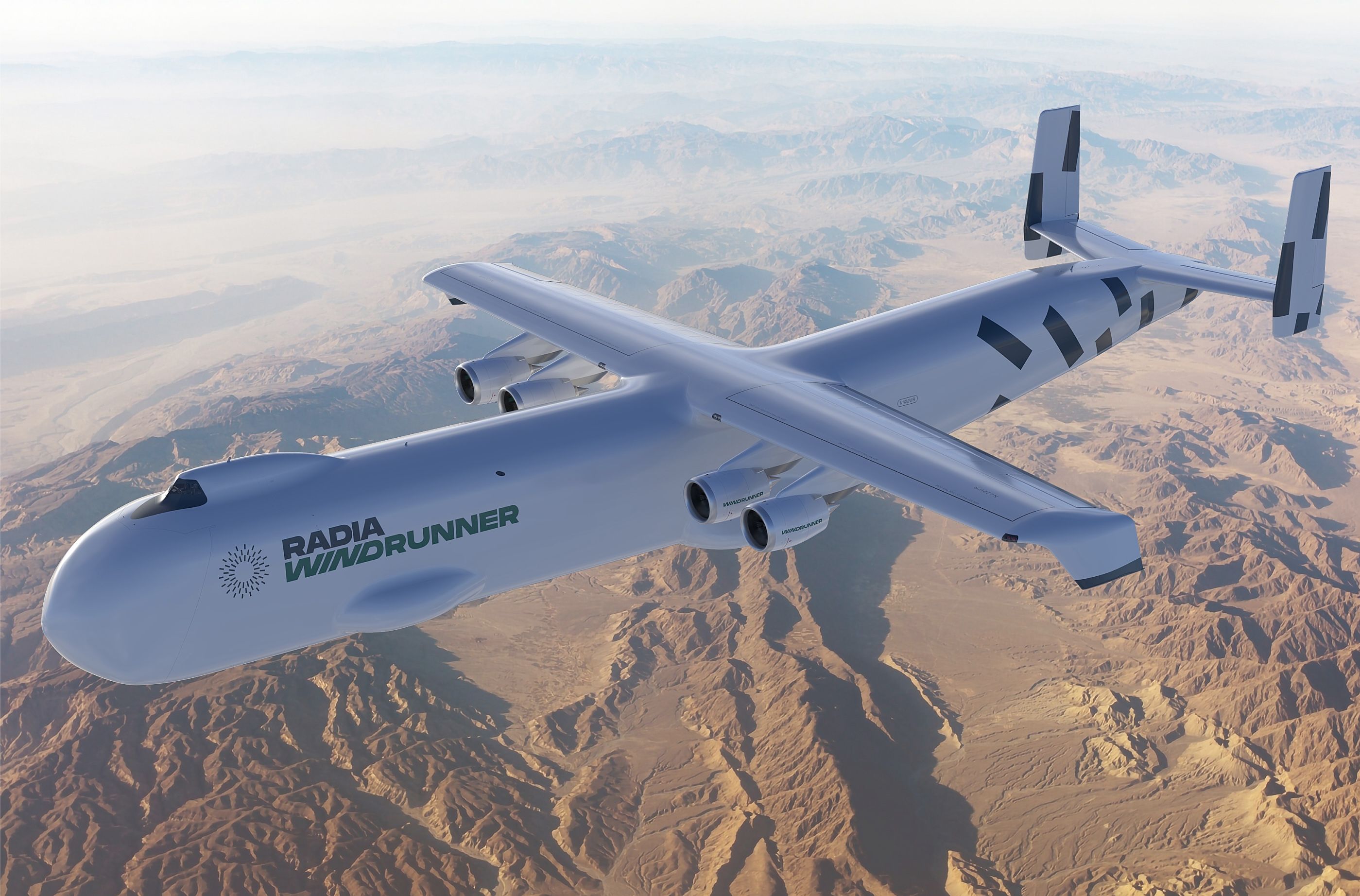Media & News
When it takes to the skies, the Radia WindRunner will be the world’s largest cargo plane. As fascinating as it is, what’s most interesting about Radia to me isn’t the aircraft itself. Indeed, founder and CEO Mark Lundstrom told me over coffee that he directed the company’s engineers to follow the mantra of “do nothing new.” The plane is built using existing technologies to ease the engineering and subsequent certification process. Radia will be an energy company, building clean energy projects, says Lundstrom. And those wind projects are only the cornerstone in Lundstorm’s vision of a much bigger energy company. Read more from TIME's Justin Worland.
A U.S. startup has emerged from stealth with the promise of enabling the aerospace industry to tap into the growing renewable energy market and diversify a business base built on passenger and cargo aircraft. (Subscription required)
Wind energy’s CO2e emissions impact is mostly frontloaded and unrelated to the turbine’s energy generation. While transportation has a small impact compared to the contribution of manufacturing and raw materials (which contribute up to 90% of CO2e emissions associated with wind energy), GigaWind – Radia’s term for the largest onshore wind turbines of today and the even larger ones of tomorrow – ultimately mitigates the impact of all by maximizing green wind energy output at lower cost and higher efficiency. WindRunner itself is designed to operate with the smallest possible impact on CO2e emissions. Take a deeper look at how WindRunner and GigaWind have a net positive impact, both in the short term and in the complete lifecycle of a GigaWind energy project.
Manufacturers of today’s and tomorrow’s largest onshore turbines – what Radia calls GigaWind – face a colossal challenge when it comes to deployment. Due to GigaWind’s enormous size – particularly its blades – manufacturers find it practically impossible to transport these blades on the ground. The three most obvious solutions currently available to get around this challenge are segmented blades, manufacturing blades onsite and aerial transport, but the only solution that will work for GigaWind is Radia’s purpose-built aerial transport solution, the WindRunner – the world’s largest aircraft.
A Colorado-based startup wants to build the world's largest cargo plane that's about the length of a football field. Its sole purpose: to deliver giant wind turbine blades. Tall turbine towers with bigger blades can harness more energy since they can take better advantage of the faster wind speeds available at high altitudes. But the bigger the blades, the harder they are to transport. Radia's giant cargo plane, called the WindRunner, hopes to fly over those barriers.
In episode 9 of the Shift News podcast, hosts Robinson Meyer and Princeton University Professor and energy systems expert Jesse Jenkins talk to Radia’s CEO, Mark Lundstrom. They discuss why the world needs a bigger plane, how such a new aircraft gets licensed, and why massive wind turbines could be such a big deal for renewable electricity. Listen on Spotify, Apple Podcasts or Google Podcasts.
Radia has come up with a way to transport the biggest, most efficient wind turbines to inland sites that would otherwise be blocked by bridges, tunnels, and winding roads. Radia foresees that the availability of new wind turbines for onshore use will open up new opportunities for wind development. The company is already looking beyond the goal of simply serving as an airborne shipper of parts for wind farms.
There’s a global energy crisis and onshore wind farms are a potential growth option. Larger wind turbines produce more power than standard ones, but the components are too big to be transported by road. What’s the solution? A Colorado-based energy startup named Radia has an idea. It’s developing the biggest aircraft in aviation history. Meet the WindRunner airplane, whose mission will be to deliver gigantic 300-foot-long blades directly to wind farms.
Colorado company will partner with energy, wind turbine and aerospace leaders to manufacture WindRunner™, a unique cargo aircraft to enable turbines that enable consistent, cost-effective wind power for the grid, green molecules and commercial power users. Radia will expand onshore wind power by building the world’s largest aircraft to deliver big, efficient turbine blades where they couldn’t go before.
The bigger a wind turbine, the more energy it produces—which is why offshore wind farms have turbines with blades that are as long as a football field. But the largest equipment that exists today can’t be used on land because it’s too big to be delivered on roads. A startup called Radia is working on one potential solution: The largest plane ever made, designed specifically to carry the biggest wind turbine blades to new wind farms while running on sustainable aviation fuel.


